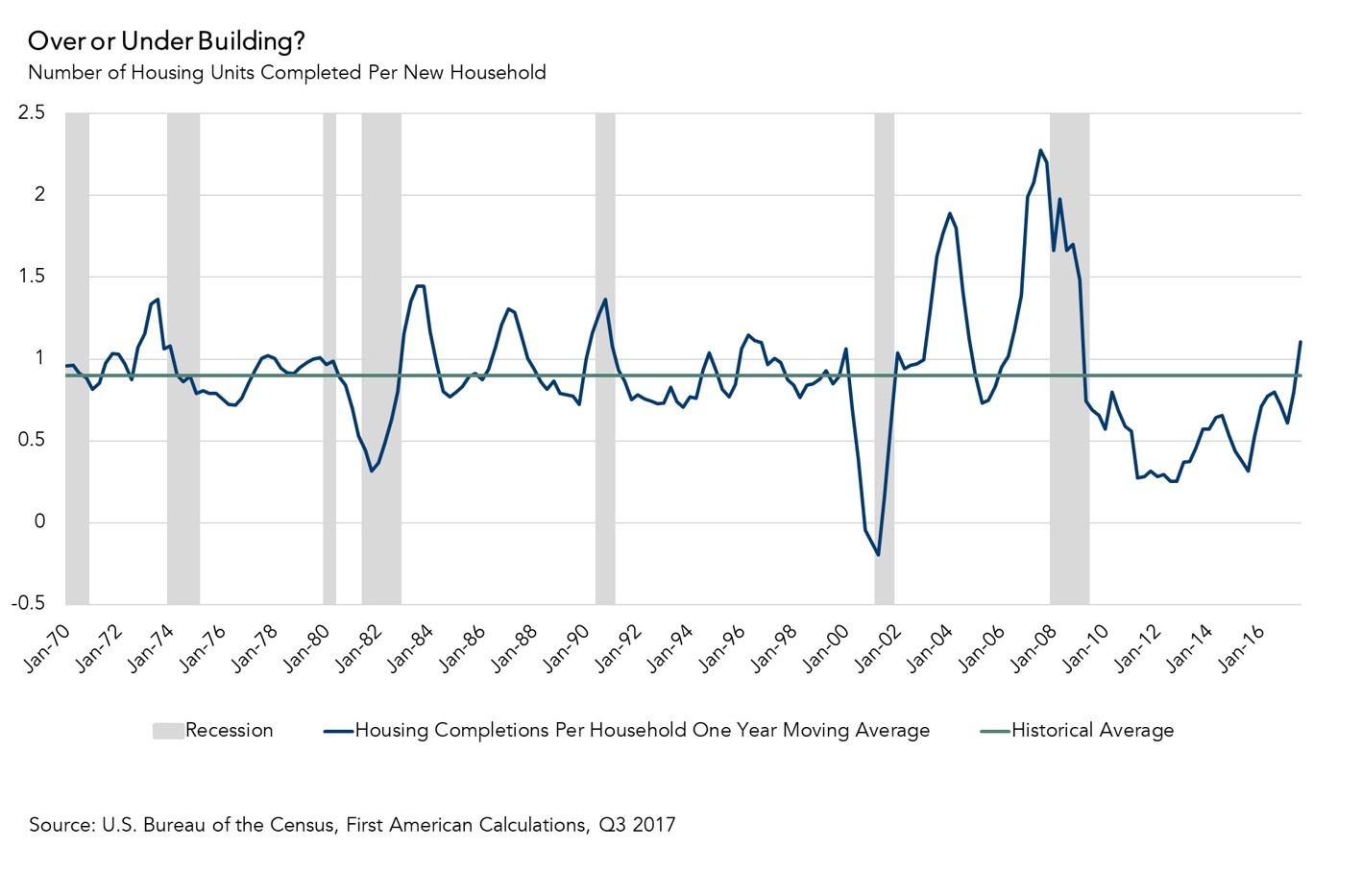It’s been just over five years since house prices reached their trough and the housing market bottomed out. In the years following that low point, there has been a lot of discussion about how to increase demand and, specifically, why young adults today didn’t want to buy homes. I believed that the lack of desire among millennials was not a generational shift of interest away from homeownership toward perennial renting, but a matter of timing and lifestyle choices. The desire to become a homeowner simply emerged later in life than with prior generations.
Yet, now the demand is here. In fact, the challenge the housing market faces in 2018 is not insufficient demand, but a paucity of supply. The reservoir of homes for sale is running dangerously low for two main reasons – existing homeowners have less incentive to sell their homes and home builders have not built enough new homes to keep up with overall demand.
“The housing reservoir is running dangerously low, meaning home prices will continue to grow and affordability challenges will increase.”
Existing homeowners, the traditional source of supply for the majority of homes for sale, are losing the benefit of a 30-year tailwind -- declining mortgage rates. Why would a homeowner sell their home when it means giving up a great low mortgage rate? The potential home seller turned home buyer would pay more to borrow an amount equal to their current home’s mortgage to buy another home. Add to this headwind that it’s hard to find a great home to buy when the inventory is so low, and it’s easy to understand why for many a home is no longer a castle, but instead a prison.
 The solution seems simple – build more new homes and increase the overall supply of housing. But, home builders have challenges of their own – limited access to buildable lots, rising building material costs, labor constraints and rising regulatory costs. The four L’s, land, lumber, labor and laws, are limiting the ability of home builders to build more homes.
The solution seems simple – build more new homes and increase the overall supply of housing. But, home builders have challenges of their own – limited access to buildable lots, rising building material costs, labor constraints and rising regulatory costs. The four L’s, land, lumber, labor and laws, are limiting the ability of home builders to build more homes.
A helpful gauge of whether home builders are under- or over-building relative to demand is the ratio of the number of housing units completed relative to the number of new households formed. When the ratio is above one, more homes are being built relative to the number of new households –this indicates over-building. When the ratio is below one, home builders are under-building. Over-building peaked in 2007, just as the housing market was also peaking. The span of under-building that started in 2009 is the longest observed in almost half a century, nearly eight years. It was only just at the very end of 2017 that the pace of housing completions increased enough to outpace new household formation.
Millennials, the largest generation in our history, are ageing into homeownership, existing homeowners are imprisoned in their existing homes, reducing a potential source of housing supply, and there is a shortage of new homes following eight years of under-building. As a result, the housing reservoir is running dangerously low, meaning home prices will continue to grow and affordability challenges will increase.



